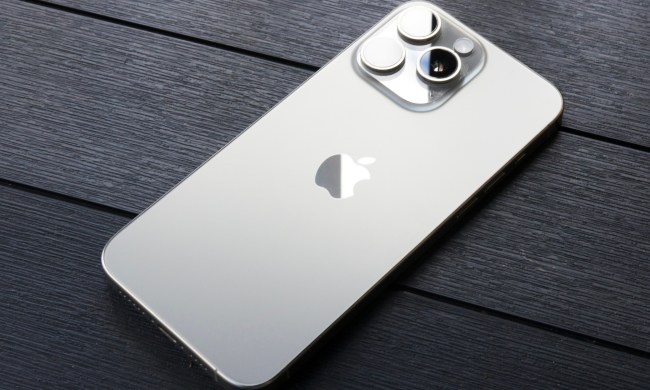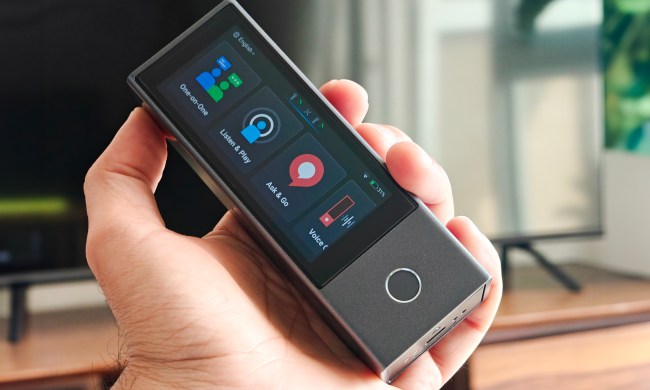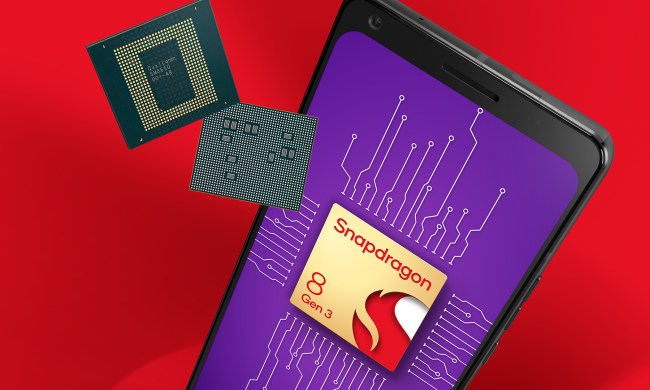
Machines are already surpassing human intelligence, Biao said, and we’re edging even closer to the prospect of a smart society — where people and machines are one. This, combined with previous statements made by Huawei about artificial intelligence and the integration of machine learning into its smartphones, gives us a tantalizing glimpse of the smart future.
Enable Me, Know Me, Be Me
“‘Enable me’ typically means the control system and our voice are used to enhance the user experience,” Biao said. “In ‘Know me,’ artificial intelligence comes into the equation, to proactively know the requirements of users.”
For example, when a friend sends a message inviting you to dinner, it will likely include the address and location. “Know me” will automatically show this on the maps app. Over time, it will learn your daily behavior and activity, and get to know you personally.
The technology is unique to the platform, and couldn’t be implemented on a Qualcomm or other competing chipset.
Huawei’s user interface placed over Android — EMUI 5.0 and EMUI 5.1 — uses machine learning techniques to push resources directly to the apps you use most often, according to the company’s software engineering director, Christophe Coutelle. That way, it’s not warming up apps you almost never use, ensuring you don’t have to wait around or deal with lag when you open your favourite apps.
This works locally in the background, along with smart resource allocation algorithms — which constantly shift the processor power, along with the phone’s RAM and GPU resources — to where they’re needed at the time. The result is 20 percent faster app launch time, and a 40 percent decrease in wait time when you first turn on the phone. How effective is Huawei’s machine learning system on predicting your behaviour? In EMUI 5.0 — introduced with the Huawei P9 and Mate 9 — its accuracy was measured at 85 percent. For EMUI 5.1 on the Huawei P10, Huawei said the predictive accuracy is up to 90 percent.
Best of all, this is Huawei’s own technology, and it’s made possible by its Kirin 960 processor. It utilises one of its cores for storing and managing apps, rather than constantly killing them off. The technology is unique to the platform, and couldn’t be implemented on a Qualcomm or other competing chipset. It also means other companies need to come up with their own version should they want to follow along.
“Kirin is the future for our smartphones, and Huawei intends to continue investing in it,” Biao said, adding that in the future, “all smart devices will have these functions.”
This type of AI smarts is already available on other smartphones such as the HTC U11, as well as through other services such as chatbots in messaging apps such as Facebook Messenger.
It’s all useful, but what about “Be me?” The very phrase is evocative. Do we want software and machines to be us? Biao’s not shy in painting a picture of a techno future more suited as a plot for a Terminator-esque movie.
“Man and machine will be integrated together for proactive thinking,” he said, when asked to describe what “Be me” will be like. “The brain is made of neural cells, it makes full use of the information stored, and is like a super computer. In the future, the machine will also store and acquire information from the outside world. The simultaneous calculations will be far stronger than the human brain.”
He cited the recent advances made by AlphaGo, Google’s now-retired AI computer program that’s purpose was to master and beat top Go players.
“Man and machine will be integrated together for proactive thinking”
“In the 90s, [computer program] Deep Blue beat a chess champion, as Go has done now,” he said. “Computers are already stronger. Einstein had an IQ of 160, and in some cases, AlphaGo has an IQ of 10,000. I believe AI and data processing will be far stronger than the human brain, and the world will become a smart society.”
The concept of a smart society, and man and machine becoming one, is likely to be a terrifying thought to many people. But Biao is optimistic that we’ll remain in complete control over this new wave of hyper-intelligent machines.
“In the end, machines will be controlled by people,” he said. “They’re powered by energy, and if the power is cut, they’ll stop working.” Let’s hope machines don’t control the power source.
The power of collective wisdom
This is not the first time Huawei has gazed into the AI future and given us its predictions. Richard Yu, Huawei’s president, also talked about the impact artificial intelligence will have on our lives during his 2017 CES keynote speech. He said over the next five to 10 years, there will be an, “intelligent revolution,” where all things will be connected, and be able to sense their environment. Our phones, he said, will be more like robots, and move past being simply smart phones, to become intelligent phones. The Kirin processor will continue to be instrumental in making this happen, with future versions having dedicated cores specifically for artificial intelligence and machine learning.
Huawei’s obviously convinced that artificial intelligence will play a big part in our smart devices over the coming years, and the company is making sure it’s in at the start. It reinvests 10 percent of its revenue into research and development each year, a figure that matches Google, and 79,000 of Huawei’s 180,000-strong workforce works in R&D. There’s no doubt it’s serious.
But so is everyone else. Samsung’s very keen on artificial intelligence, but isn’t off to the best start with its stalled Bixby virtual assistant — despite its acquisition of AI experts Viv Labs. Apple revealed more about its improvements to Siri during its WWDC 2017 keynote, including news of extensive machine learning tools being made available to developers inside iOS 11. It’s also likely to install a lot of these skills into its HomePod smart home device which launches later this year.
Huawei is the world’s number three smartphone manufacturer, behind Apple and Samsung respectively. Its goal is to be number one, and we were told of an important company mantra it considers key to reaching the top: A belief in “the power of collective wisdom.” There’s a clear parallel between this, and the AI research described here. Let’s see if this can become more than just a fortuitous coincidence.





